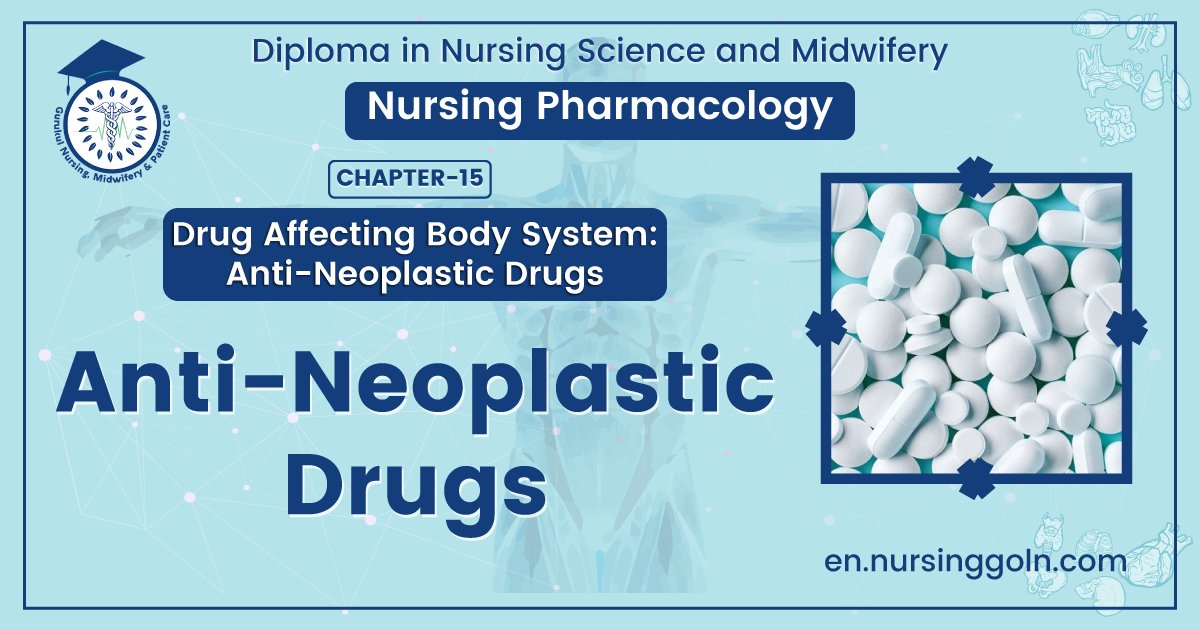Antineoplastic drugs – This book covers the entire syllabus of “Pharmacology” prescribed by BNMC- for diploma in nursing science & midwifery students. We tried to accommodate the latest information and topics. This book is an examination setup according to the teachers’ lectures and examination questions.
At the end of the book, previous questions are given. We hope in touch with the book students’ knowledge will be upgraded and flourish. The unique way of presentation may make your reading of the book a pleasurable experience.
Cancer is an extremely common disease, which impacts an untold number of people (and animals) each year. The abnormal cell division caused by cancers can impact virtually any body system, unlike other diseases that may only impact a single organ. In many cases, multiple systems are impacted at the same time.
So how do we treat a disease that can take so many different forms? We use a special group of medicines called antineoplastic drugs that can range in form from antibiotics to chemotherapy agents.

Antineoplastic drugs
Antineoplastic drugs are medications used to treat cancer. Antineoplastic drugs are also called anticancer, chemotherapy, chemo, cytotoxic, or hazardous drugs. These drugs come in many forms. Some are liquids that are injected into the patient and some are pills that patients take.
Classification of the anticancer drugs:
Classification of the drugs used in cancer chemotherapy / anti-cancer drugs based on cell cycle:
A. Cell cycle ‘specific anticancer drugs:
1. Antimetabolites:
- Capecitabine
- Cladribine.
- Cytarabine.
- Fludarabine.
- 5-Fluorouracil.of cast
- Gemcitabine.
- 6-Mercaptopurine (6-MP).
- Methotrexate (MTX).
- 6-Thioguanine (6-TG).
2. Antitumor antibiotic;
- Bleomycin.
3. Epipodophyllotoxins;
- Etoposide.
- Teniposide.
4. Taxanes;
- Docetaxel.
- Paclitaxel.
5. Vinca alkaloids:
- Vincristine.
- Vinblastine.
- Vinorelbine.

B. Cell cycle nonspecific anticancer drugs:
1. Alkylating agents;
- Busulfan.
- Cyclophosphamide,
- Mechlorethamine.
- Melphalan.
2. Anthracyclines:
- Daunorubicin.
- Doxorubicin.
- Epirubicin.
- Idarubicin.
- Mitoxantrone.
3. Antitumor antibiotics;
- Dactinomycin.
- Mitomycin.
4. Camptothecins:
- Irinotecan.
- Topotecan
5. Platinum analogs;
- Carboplatin.
- Cisplatin.
- Oxaliplatin.

Principles of combing cytotoxic drugs in the treatment of malignancy:
- To broaden the extent of cancer cell destruction.
- To obtain synergistic effect.
- To reduce the duration of chemotherapy.
- To minimize adverse effects.
Read more:
